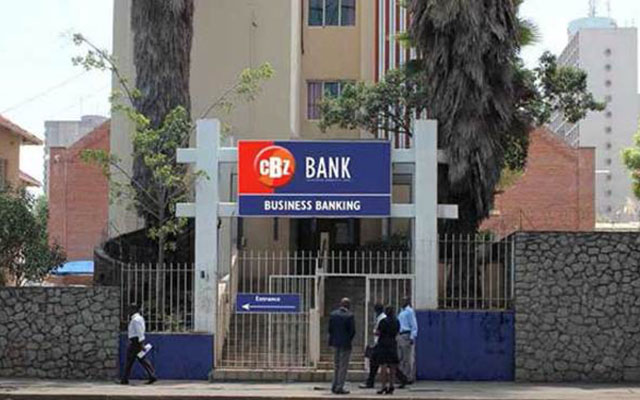2016 banks balance sheets


CBZ bank results showed a total assets growth of 5 percent
My Two Cents
Basic banking involves deposit taking from the public and creating credit.
A loan to deposit ratio of above a 100 percent would mean that banks are using other sources of funding than just deposits to write assets. Credit lines and shareholder capital is also deployed to lending.
Banks earn part of their income on the lending margin – their asking rate from their borrowers is higher than what they pay to their depositors. Deposits also generate income through bank charges on transactional activity and account maintenance. For some five years now, generic bank balance sheet would comprise loans as the main asset with deposits making up the bulk of liabilities.
Of interest is how the balance sheets for banks have rapidly evolved in terms of asset composition.
According to the Monetary Policy Statement, total assets for banks grew by 11 percent in 2016 to $8,79 billion. Despite this growth, loans were actually down 5 percent to $3,69 billion. Because deposits were up by 16 percent to $6,51 billion, the loan to deposit ratio came down 56,64 percent from 86,07 percent as at December 2015.
The release of 2016 results by a few banks to date revealed the source of asset growth. CBZ Bank results showed a total assets growth of 5 percent spurred by a 61 percent growth in treasury bills including accrued interest. All the other assets were stagnant to down save for cash which increased by 85 percent. As a result, the bank registered material growth in its income from securities investments supported also by interest booked from Treasury Bills.
Likewise, Barclays’ performance was to some extent boosted by the growth in Treasury bills as its interest income from investment securities went up by 116 percent following growth in its Treasury Bills holdings by over 7 times. ZB Bank’s Treasury Bills holdings make up 33 percent of their total assets and 1,4 times the size of their loan book.
It seems the Treasury Bills’ frenzy is spread across all banks. Although some banks are yet to release their financials, it may turn out to not be an off the mark assumption that most of the banks are likely to have a similar asset composition come end of reporting season. Over the year, banks were singing the same hymn as far as lending to the market is concerned.
The market’s credit quality is said to be deteriorating and lending was to be done stringently, hence the 5 percent decline in loans.
Instead, banks have accumulated Treasury Bills. In their opinion, the paper is available in the market at huge discounts and therefore is a business opportunity to maximise on the good bargains.
Other than just being cheaply priced assets, the Treasury Bills are backed by the “good faith of the Government” which is expected to honour obligations when they fall due. Banks are supposedly not weary of default when it comes to this part of their asset book, as there is no expectation of writing it off at any point, if the “good faith” of the Government holds.
Problems may emerge though if these financial instruments are rolled over continuously with no constant cash-flows. It may impact on the asset and liability management of a bank, as banks have everyday liquidity requirements to honour on behalf of their customers.
Banks face constraints as far as investing in low liquid assets is concerned. Therefore a continuously rolled over Treasury Bills may essentially be exhibiting the same characteristics as that of any lowly liquid assets in that it starves the banks cash-flows requirement. An active secondary market would resolve the liquidity issues.
Holders of the securities can be able to monetise their Treasury Bills when they have immediate need for cash. Of late, banks seem to be the main key buyers of Treasury Bills, although the appetite is varied among the bankers. An organised trading market for Treasury Bills can even attract interest among other non-bank investors.
Other than Treasury Bills, the liquidity ratio is notably above last year at 6,191 percent and the prudential requirement of 35 percent.
Cash holdings for some banks are quite significant. Prudentially, it seems like a good cover especially in this environment where liquidity levels are generally low.
On the other hand, however, assets held as cash are not income generating. Dilemma lies in what assets to write, that creates a balance of reducing the risk of default while generating income.
Strategy for some banks is undertaking property financing so as to hold some portfolio of mortgage backed securities.
Collateral in real estate will be a desirable shield in reducing total losses on loans in the event of default although it may be disastrous for liquidity of banks if it is held at undesirably high levels after forfeitures.
As banks shy away from vanilla lending, balance sheet structure for the banking sector has considerably changed. Treasury Bills are making up a significant part of the banks’ assets and this introduces its own benefits as well as potential problems.
Further, as deposits increase against lower to no growth in loans, cash levels at banks increase. There is a possibility that some banks will continue to be buyers of Treasury Bills to book in the deep discounts.
Mortgage lending is finding favour as a relatively better way of lending because it is securitised by real assets.
In 2017, banks are likely to maintain balance sheet structure.
Issues of concern are likely to amplify and lending will be contained. Government financing needs may rise and more Treasury Bills may be availed in the market.
Possibly, bank holdings of Treasury Bill may also increase and simultaneously market loans are unlikely to grow by any material magnitude.
Follow The Herald Business on twitter @H_BusinessZim or @happ_zenge or contact us directly on 04 707241










Comments